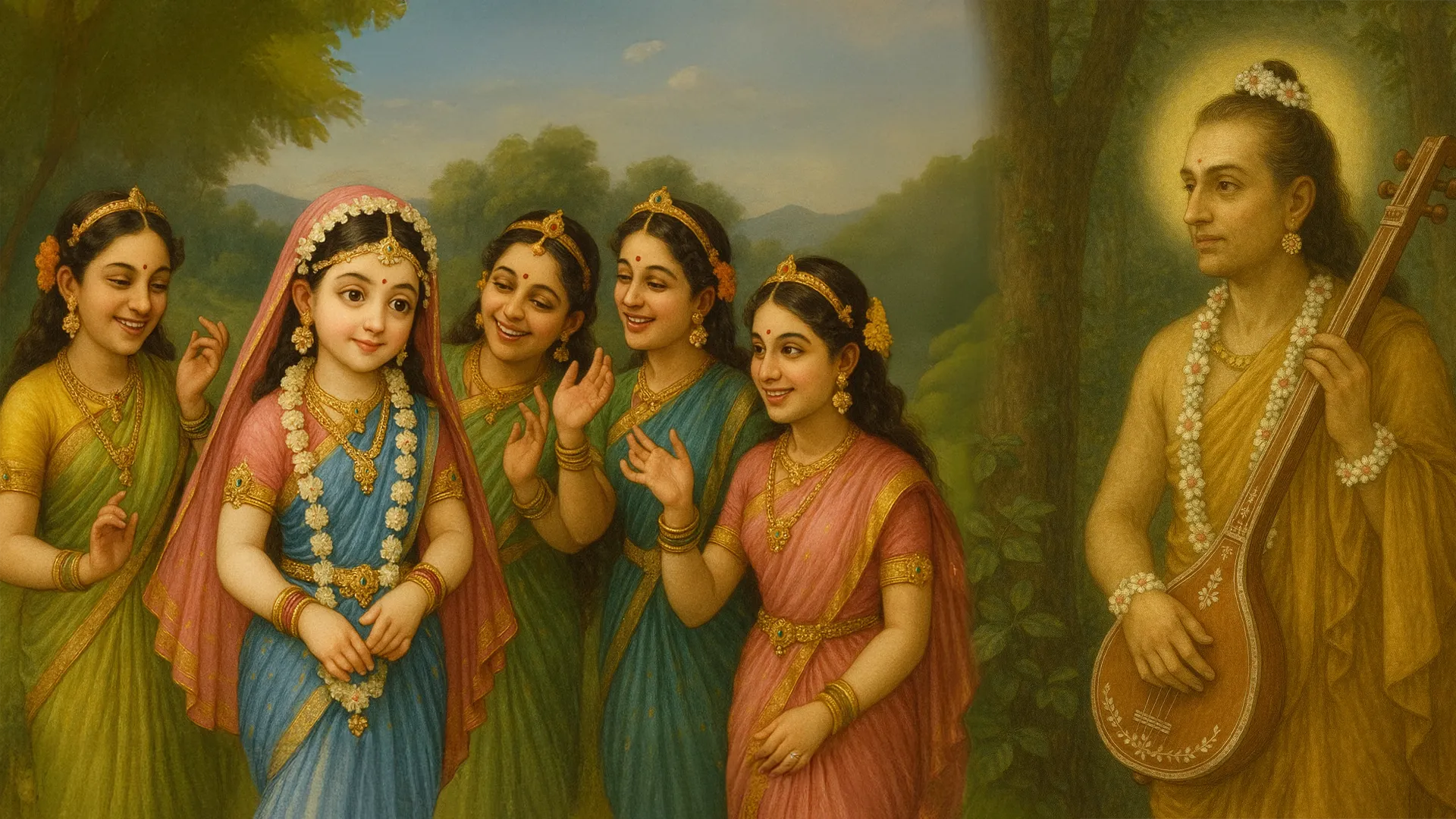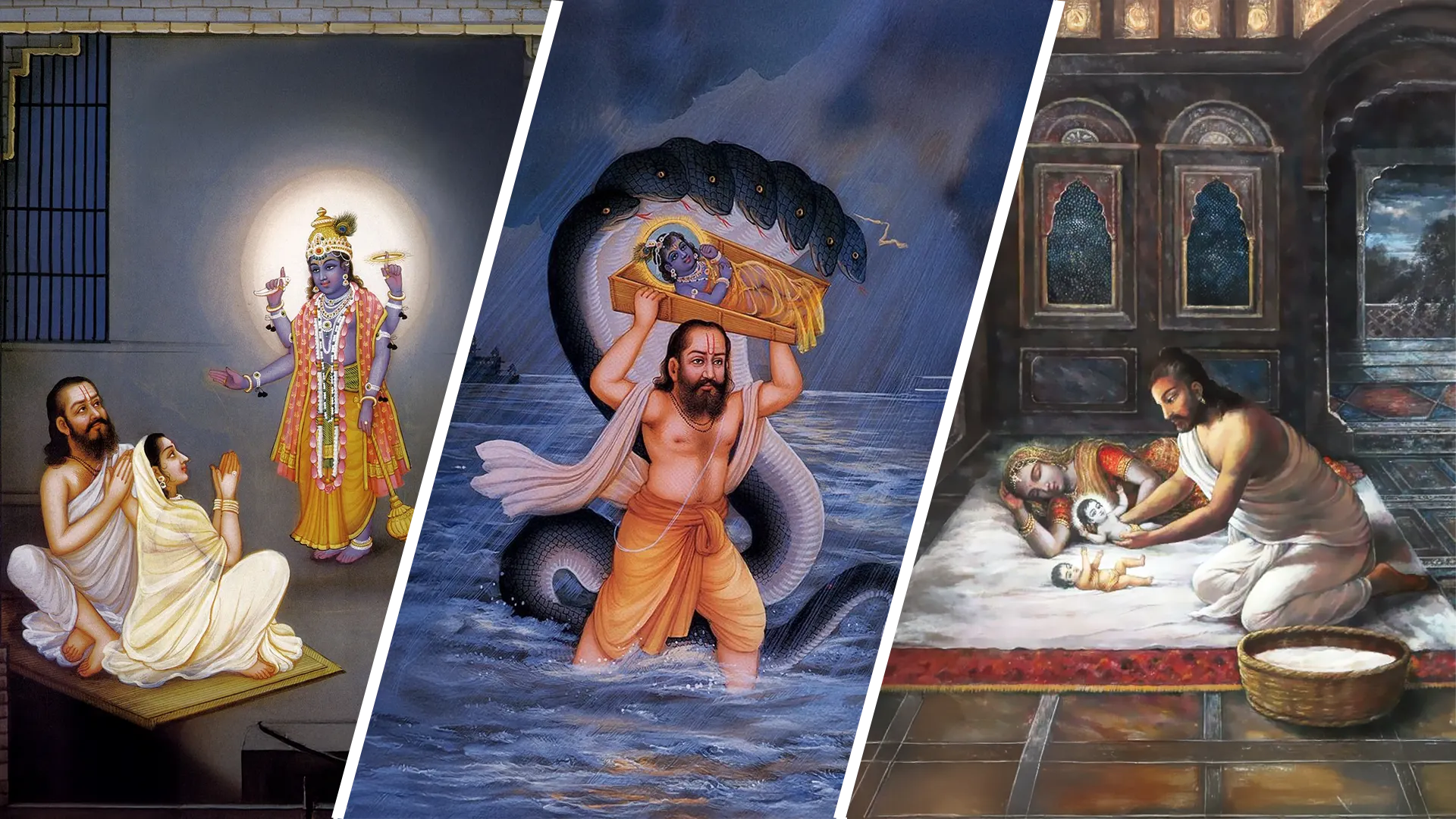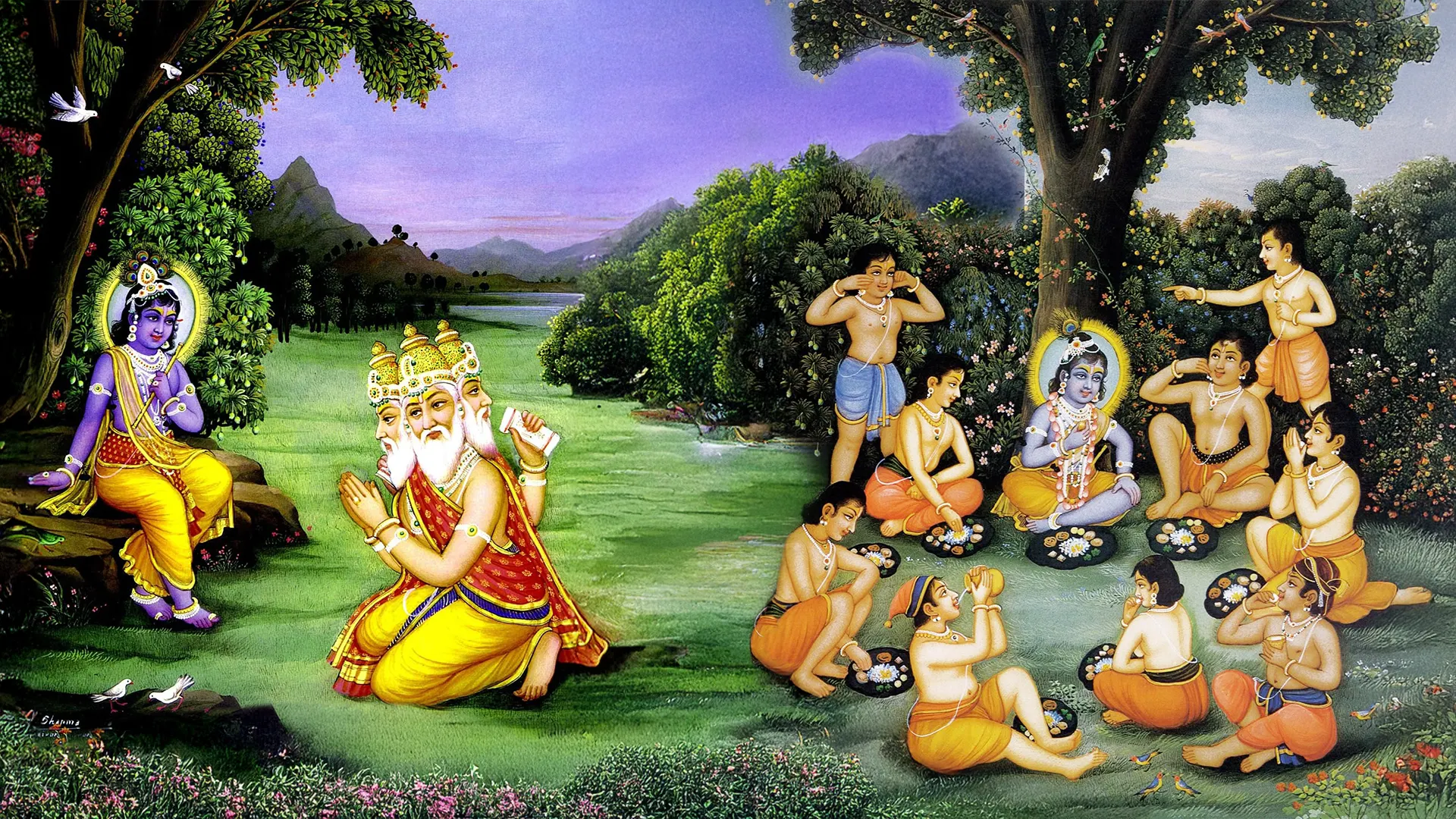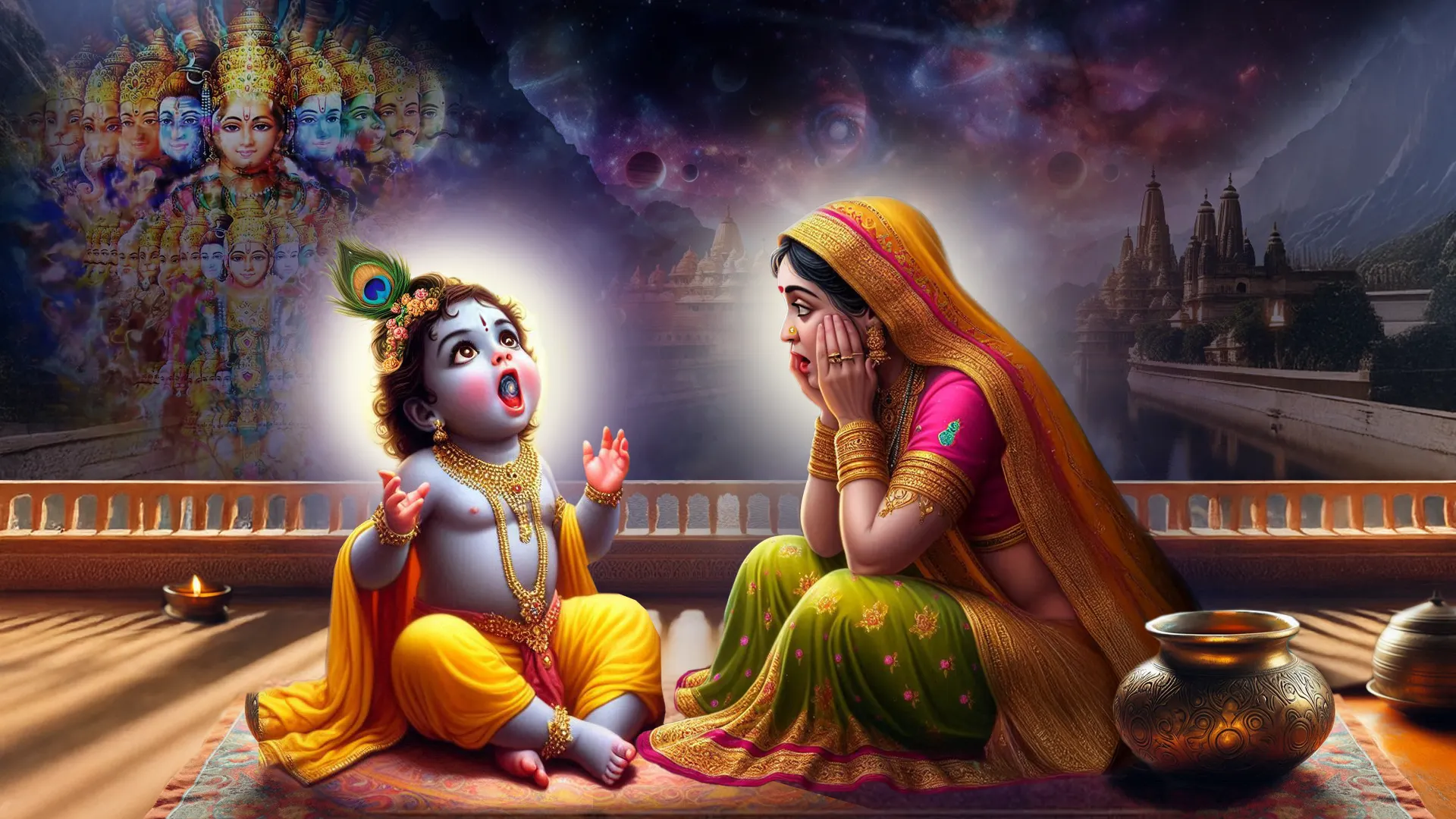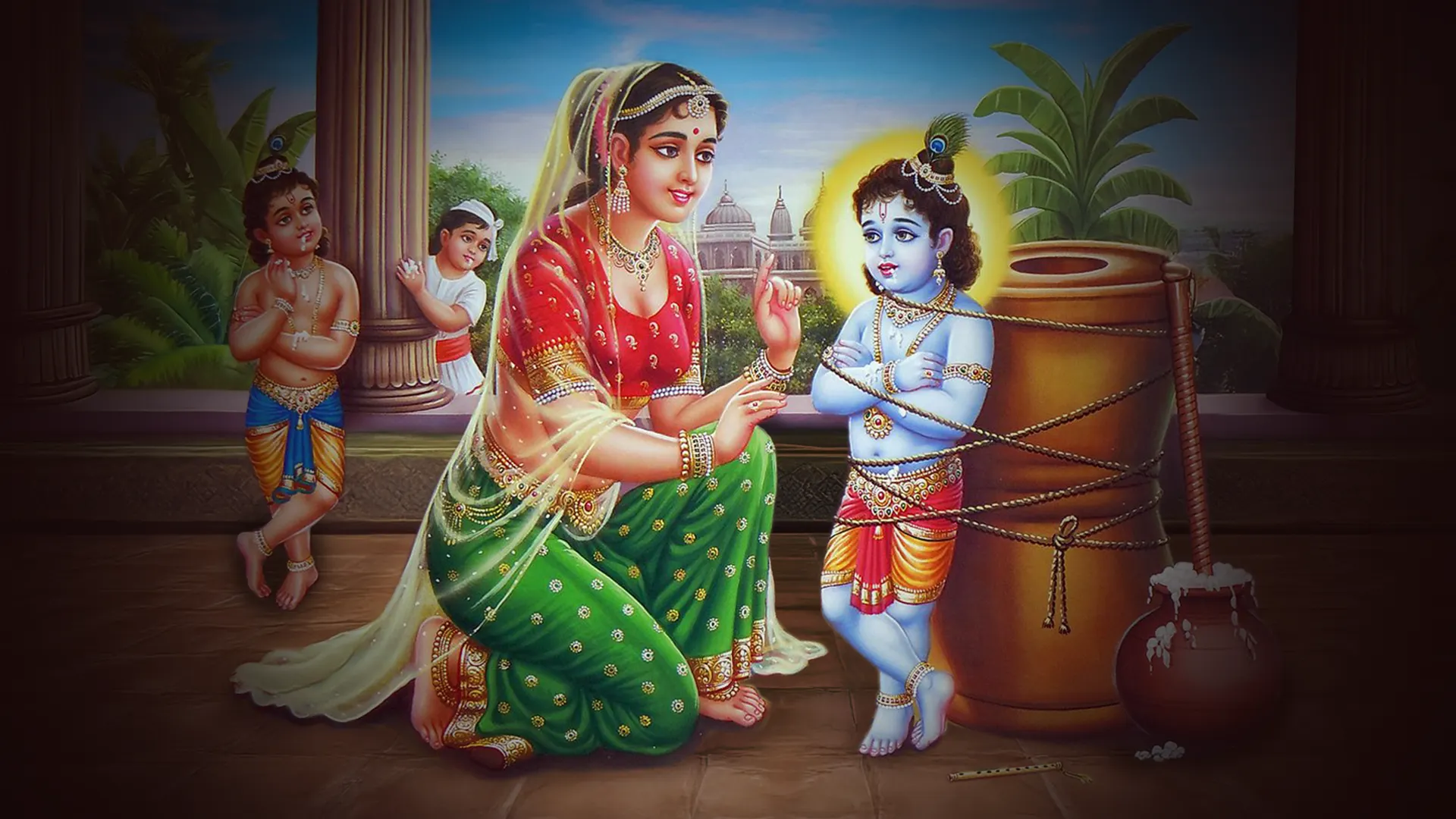The third day of Navaratri is dedicated to Maa Chandraghantā (चंद्रघंटा), one whose forehead is adorned with the half moon (चंद्र) shaped like a bell (घंटा). Those who worship Maa Chandraghanta are blessed with strength and fearlessness. She is the married form of mother Parvati.
The goddess Chandraghanta is seen in a warrior pose mounted on a Lion. She is depicted with ten hands carrying Trishul, Gada, Sword and Kamandal in her four left hands and keeps the fifth left hand in Varada Mudra. She carries the lotus flower, Arrow, Dhanush and Japa Mala in her four right hands and keeps the fifth right hand in Abhaya Mudra. She has taken this warrior pose to eliminate the daityas (demons) and establish the rule of justice and dharma.
While Mother Parvati, in the forms of Maa Shailaputri and Maa Brahmacharini, is peaceful, in the form of Maa Chandraghanta, She is ready for the war with all her weapons. It is believed that the sound of the moon-bell on her forehead expels all types of spirits away from her devotees.
Rituals and Worship of Mother Chandraghanta
To worship Maa Chandraghanta, a shallow clay-based utensil is used as a base. Three layers of dust and grains, also known as Saptadhānya/Navadhānya, are poured over the base, followed by sprinkling a little water to provide the seeds with enough moisture. The kalash is then filled with supārī (betel nut), coins, akṣat (raw rice mixed with turmeric powder), and dūrva grass is placed on the base. Five mango tree leaves are then positioned around the neck of the Kalash, which is covered with a coconut. Offer yellow flowers to the Mother along with panchamrita (पंचामृत/pañcāmṛta), a mixture of milk, curd, honey, jaggery, and ghee. Bhog of pomegranate, jaggery and gulab jamun is then offered.
Devi Chandraghanta: The Tale of Triumph Over Mahishasura
As stated in the Devi Puran, once a fierce battle took place between the devatā (gods) and the powerful daitya (demon) king Mahishāsura. Despite their valiant efforts, the devatas were defeated, and Mahishasura seized the throne of Indra, establishing his authority over the universe. The devas were left helpless, and their fate hung in the balance.
Indra, along with other devats, in their hour of need, turned to the Trinity - Brahma, Vishnu, and Mahesh. They shared their story of woe, recounting how the heavens had been held captive by the daitya king, forcing them to leave their celestial abode and seek refuge on Earth.
Moved by their plight, the Trinity radiated a powerful energy, which materialized into a magnificent goddess. She had ten arms later adorned with divine weapons from various gods and goddesses, including a trident from Lord Shiva, a chakra from Lord Vishnu, and weapons from others. Indra himself descended from his Airavat (Elephant), contributing his vajra (thunderbolt) and a ghanta (bell). Surya, the Sun God, bestowed upon her his radiant rays, a gleaming sword, and a fierce lion as her mount.
Empowered by these divine gifts, the goddess confronted Mahishasura and his army. In a swift and decisive strike, Devi Chandraghanta vanquished them all. The daitya king and his clan met their end, and the goddess Chandraghanta, in her indomitable power, liberated the devatas from their fears and restored the order of dharma.
This epic battle between good and evil showcases the victory of righteousness over malevolence and the emergence of Chandraghanta as a symbol of divine power and protection.



